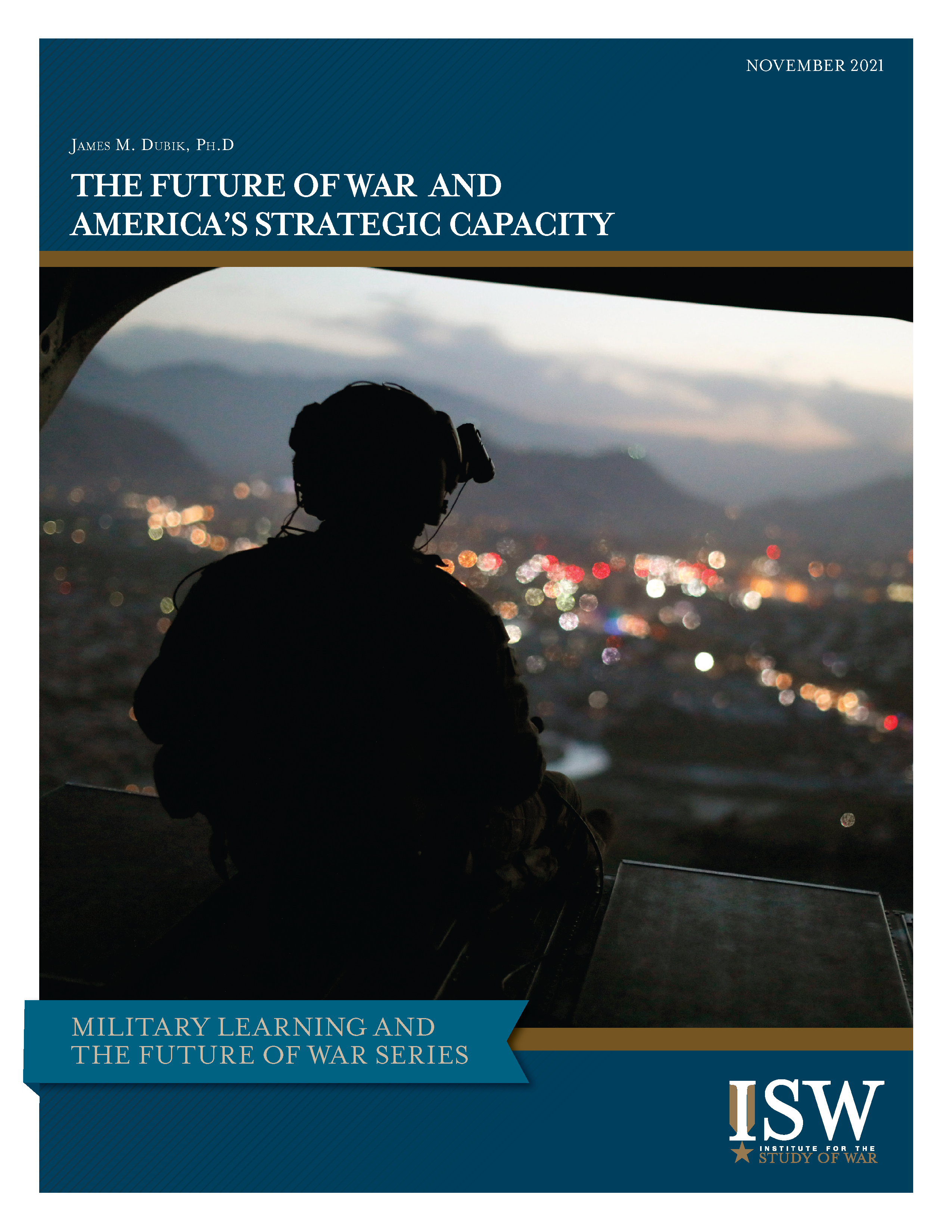 |
 |
The Future of War and America’s Strategic Capacity

This paper is part of ISW's Military Learning & The Future of War series. Click here to go to the series homepage.
EXECUTIVE SUMMARY (Download the full report here)
The world is not in an era of change; it is in the midst of a change of era, affecting almost every aspect of individual and communal life. The amount and velocity of change will continue to increase and thus exacerbate the already significant stress on the leaders and institutions within nations as well as those associated with the global security environment. The probability of conflict—war in all its forms—is rising. Correspondingly, the importance of thinking and acting at the strategic level is rising as well.
No single organization in the US National Security apparatus is charged with attending to the strategic-level lessons the United States should be learning. The study of tactics and individual battles; the forces, weaponry, and equipment used to fight; and how battles are strung together into campaigns—are all necessary and important elements concerning the future of war. The US military services, the Joint Staff, Geographic Combatant Commanders, and the US defense industries are hard at work trying to figure out future warfighting requirements: new weapons and equipment, new fighting methods, new-leader development and training requirements, new capabilities, and new organizations. The results of this work at the tactical and operational levels of war will affect success at the war-fighting level. This paper does not aim to duplicate this effort. Rather, this paper begins from a different perspective, one that acknowledges that wars must also be waged in addition to being fought.
Waging war requires different skills and capacities. Three core strategic skills are particularly important:
-
Identifying coherent aims or purposes for any use of force, then aligning military and non-military strategies, policies, and campaigns that increase the probability of achieving those aims;
-
Creating the organizational capacity to translate initial decisions concerning strategies, policies, and campaigns into action, adapting as events unfold to achieve aims and bring the use of force to a successful conclusion;
-
Building and sustaining legitimacy—using force only for legitimate reasons, observing international law in execution, ensuring proper integration of military and civil leadership, and sustaining public support throughout.
Proficiency in these strategic skills increases or decreases the probability of success at the war-waging level. Waging and fighting wars both matter. Any study of the future of war that focuses merely on war-fighting will be necessarily myopic and insufficient. An adequate study must also address war-waging. This paper, therefore, takes up the following question: what should senior US civil and military leaders and US war-waging institutions learn in anticipation of a future already unfolding?
Answering this question begins with explaining that the concept of war has undergone a paradigm shift from a binary to a unitary understanding of war. The old, binary paradigm that separated “war” and “operations other than war” made little sense when US strategists adopted it during the Cold War, and it makes less sense now. US strategists must understand war in all its forms as the unitary phenomenon it is. This conceptual shift has taken place within a larger strategic context. The environment in which all uses of force and forms of war take place has been changing rapidly and growing more complex every day, and this pace of change and complexity promises only to accelerate in the future.
US senior military and political leaders are facing an ever-increasing volume and velocity of challenges—social-political, economic, diplomatic, financial, and informational—that are resulting from the emerging information age, the Fourth Industrial Revolution. One of the effects of these challenges is exacerbated inequality within nations and among them, an inequality that produces fear, anxiety, and divisiveness that, in turn, increases the probability of strife, conflict, and the use of force. The increased probability of using force in one form or another is also coming from US competitions with China, Russia, and Iran; the United States’ unresolved wars in Iraq, Syria, Afghanistan, and globally against Salafi jihadis; the nuclear-armed, irritating North Korea; the effects of climate change; and the receding trust in US leadership.
The paper goes on to outline how the conceptual shift and environmental trends make executing the three, core war-waging skills in the future even harder than they had been. Then it ends with conclusions and recommendations.
